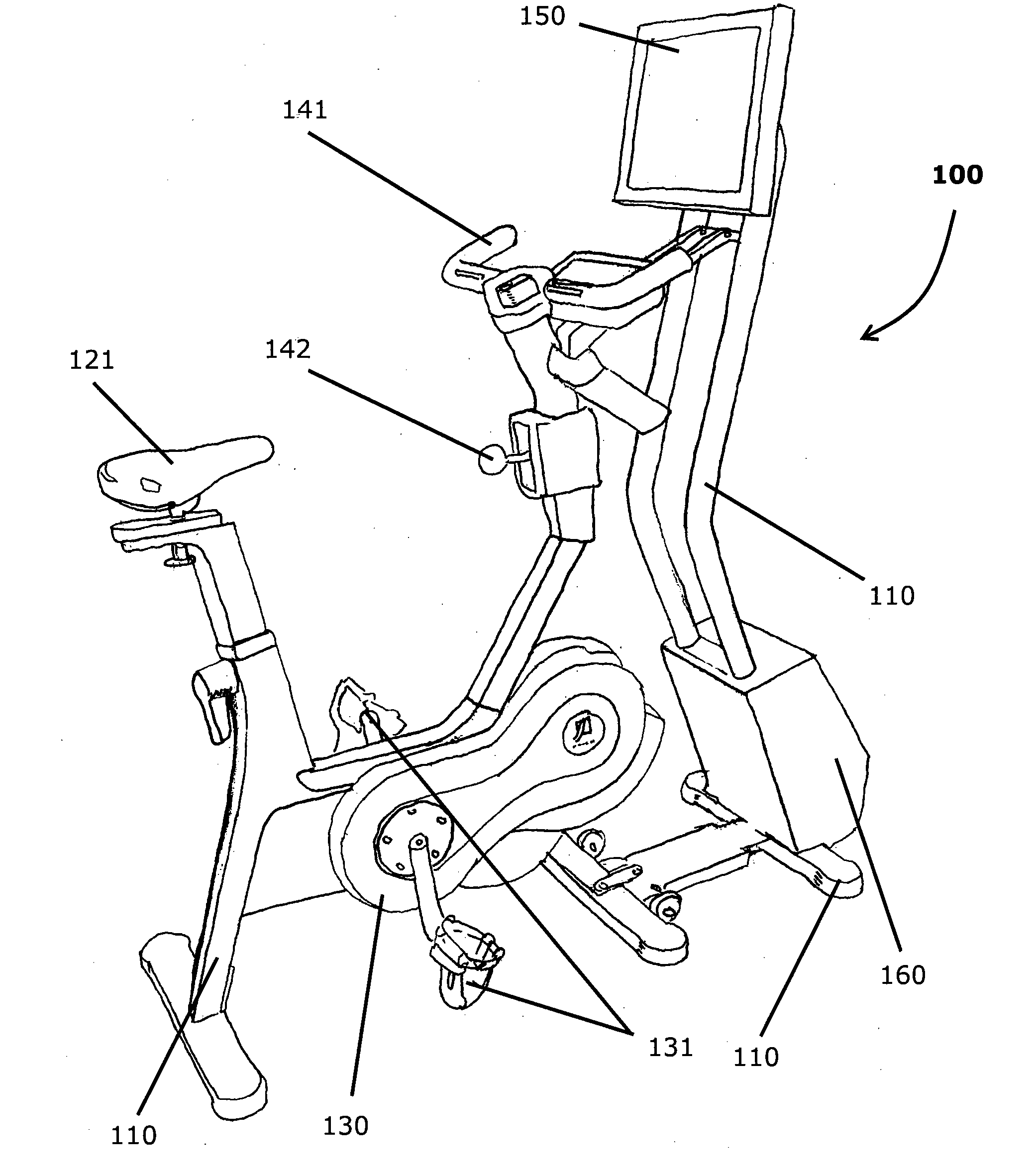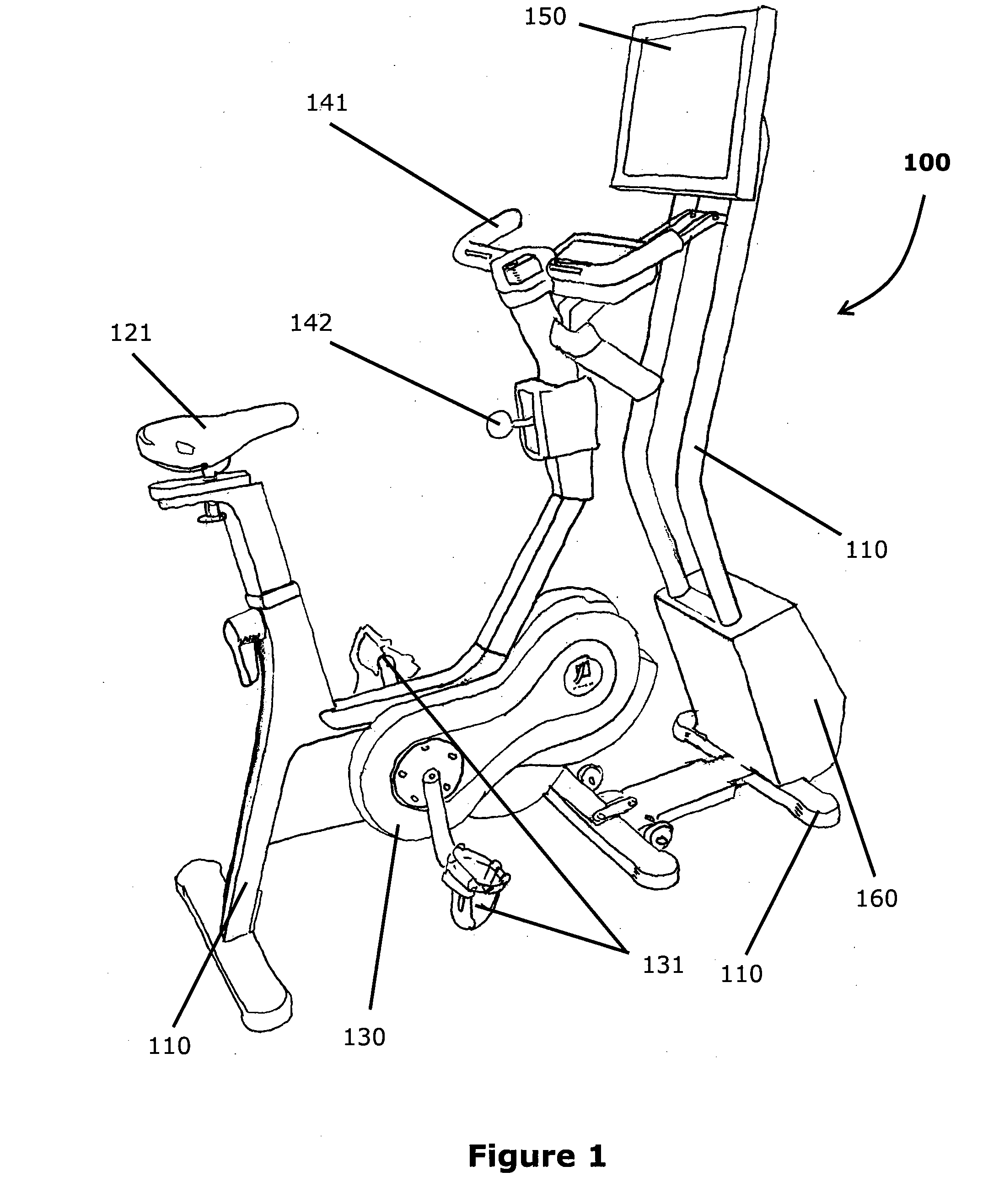Closed-Loop Power Dissipation Control For Cardio-Fitness Equipment
a technology of power dissipation control and cardio-fitness equipment, which is applied in the direction of cardiovascular exercise devices, gymnastic exercise, sport apparatus, etc., can solve the problems of not always consistent performance, and other riders may have an easier time making it to the finish line, so as to improve the quality of the exercise experience
- Summary
- Abstract
- Description
- Claims
- Application Information
AI Technical Summary
Benefits of technology
Problems solved by technology
Method used
Image
Examples
Embodiment Construction
[0027]A system, method and apparatus are provided for closed-loop power dissipation control for cardio-fitness equipment. The specific embodiments described in this document represent examples (e.g., stationary exercise bicycles) or embodiments of the present invention, and are illustrative in nature rather than restrictive. In the following description, for purposes of explanation, numerous specific details are set forth in order to provide a thorough understanding of the invention. It will be apparent, however, to one skilled in the art that the invention can be practiced without these specific details. In other instances, structures and devices are shown in block diagram form in order to avoid obscuring the invention.
[0028]Reference in the specification to “one embodiment” or “an embodiment” means that a particular feature, structure, or characteristic described in connection with the embodiment is included in at least one embodiment of the invention. The appearances of the phras...
PUM
 Login to View More
Login to View More Abstract
Description
Claims
Application Information
 Login to View More
Login to View More - R&D
- Intellectual Property
- Life Sciences
- Materials
- Tech Scout
- Unparalleled Data Quality
- Higher Quality Content
- 60% Fewer Hallucinations
Browse by: Latest US Patents, China's latest patents, Technical Efficacy Thesaurus, Application Domain, Technology Topic, Popular Technical Reports.
© 2025 PatSnap. All rights reserved.Legal|Privacy policy|Modern Slavery Act Transparency Statement|Sitemap|About US| Contact US: help@patsnap.com



